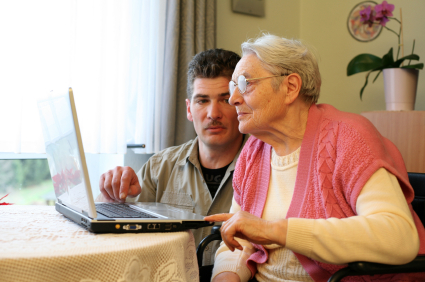Posted by Jack Shitama ● Tue, May 14, 2013 @ 16:05 PM
Church Hacks: Tech Buddy Program for Church Communications to Members without Email
Hack: a clever solution to a tricky problem; to hack is to modify or change something in an extraordinary way (urbandictonary.com)
Your Church Has a Communication Problem. This was a recent blog post by Pastor Teddy Ray from First UMC in Lexington, Kentucky. It’s an extensive analysis of all the reasons why we find it so hard to communicate in our congregations. A key insight is that the church is a pastoral, strategic and social organization, all at the same time. He wrote a follow-up post with some helpful suggestions. But, as they say on Facebook, “It’s complicated.”
I like simple things. One simple idea I came across is a Tech Buddy program. It was conceived by Rev. Patti Collett at Wyoming UMC in Delaware as a way to communicate to members without email. “Techno-NO” members, as Patti calls them in her church newsletter article (pages 4-5), can request a Techno-Buddy. Their Techno-Buddy calls them whenever a church communication (email, text, etc.) goes out. It seems like a great way to keep everyone in the loop.
I was preaching recently at Bethel UMC in Lewes, DE and an announcement came up on the screen publicizing their Tech Buddy program. I said to the pastor, Rev. Fred Duncan, “That’s a great idea. Where did you get it?” He said, “From you!”
Apparently, I had shared about the Wyoming UMC program in a meeting and Fred immediately picked up on it and implemented it at Bethel Church.
This seems like an idea that a lot of churches can use. So I spent some time on the phone with Patti and Fred and came up with some simple guidelines for starting a Techno/Tech Buddy program (You’re church council can fight over the actual name). Here they are.
Recruit Your Buddies
Use your standard means of communication to invite your tech-savvy members to volunteer as a Tech Buddy. Church bulletins, newsletters and especially an email blast should result in plenty of volunteers.
Be sure to emphasize that they’ll only have to communicate information to one person.
Do this for about a month.
Invite Your Participants
The word invite is important. Both Patti and Fred emphasized that you can’t force people to participate. Some will get downright offended if you suggest that they’re out of the loop. Try to affirm that there is nothing wrong with the fact that they don’t do email.
Encourage potential Participants to think about a tech-savvy person in the church that they know and like.
Do this gently and regularly, as you’ll have early and late adopters.
Match Buddies to Participants
Ideally, the Buddy and Participant will already know and like each other. The like part is pretty important. However, this type of program can provide an opportunity for two people to get to know each other. The possibility for an intergenerational friendship seems quite likely.
Encourage the Buddy to call promptly after a communication is received. Also, advise the Buddy that s/he should use discretion, as not all communications need to be passed on.
Do they really need to hear about every announcement that comes from the church? Perhaps. Maybe not. The important thing is to establish a relationship of trust so that the phone calls received are valued and appreciated.
Understand that Not Everyone Will Participate
You would think everyone without email would jump at the chance to have a Tech Buddy. But there are a lot of reasons that someone might decline. Whether we agree or not, it’s not our call. Accepting people where they are is important.
Of course, whether you bite your tongue when they yell at you because they didn’t know about the church picnic is YOUR call. Good luck with that.
Bottom line: a Tech Buddy program can be a great way for the church to communicate with members who don’t have email. It won’t reach everyone. But it could benefit many, as well as create some providential connections.
I asked Patti Collett if she borrowed the idea from somewhere else. She thinks it was an original idea. If it wasn’t, she doesn’t remember hearing about it.
Patti’s comment: “I came up with it out of desperation. You try to work to care for people. Other organizations can say to people, catch up with the times or you’re out of luck. We’re the church, we can’t do it that way.”
Amen to that.
Topics: Thriving Churches

